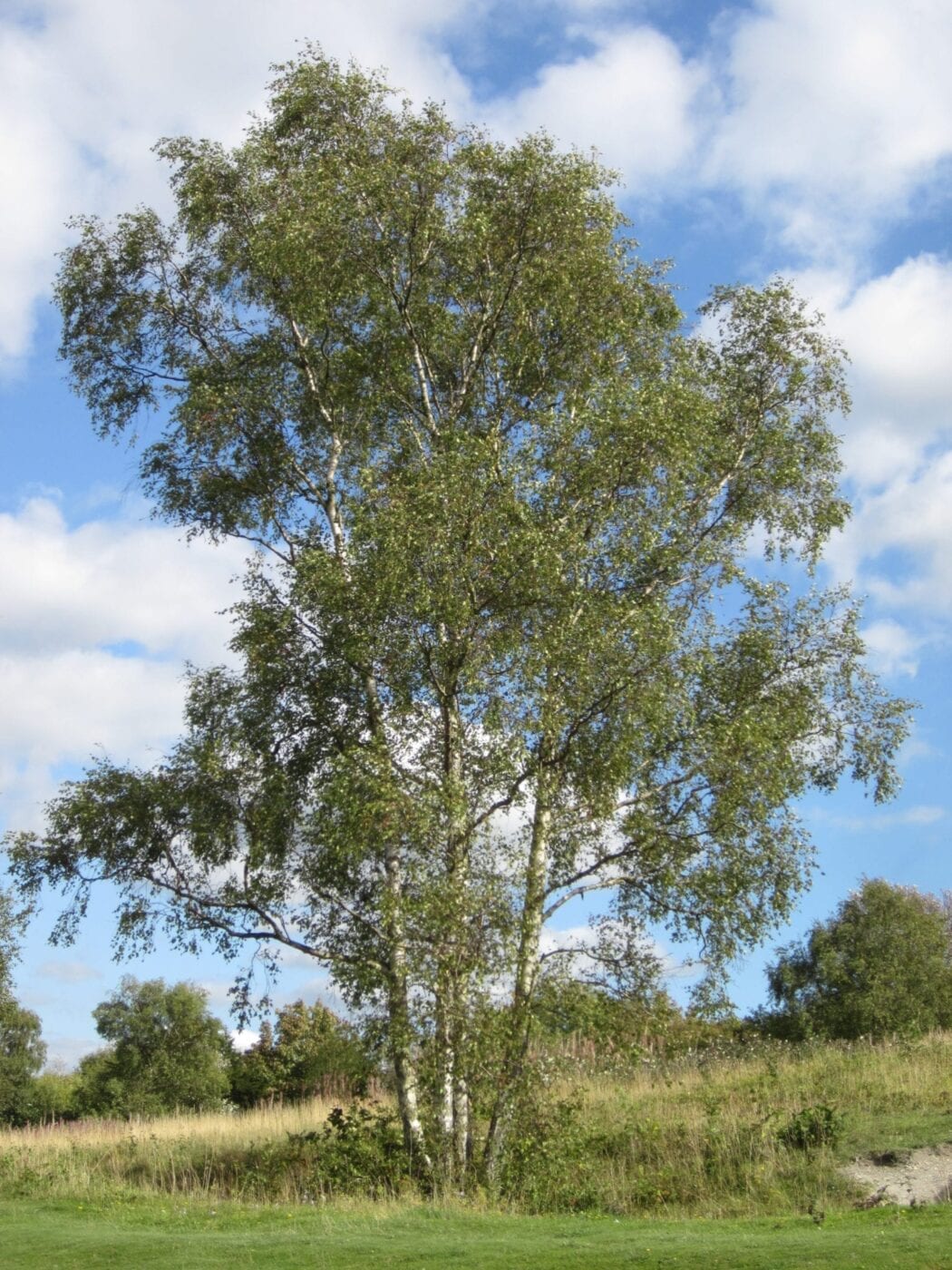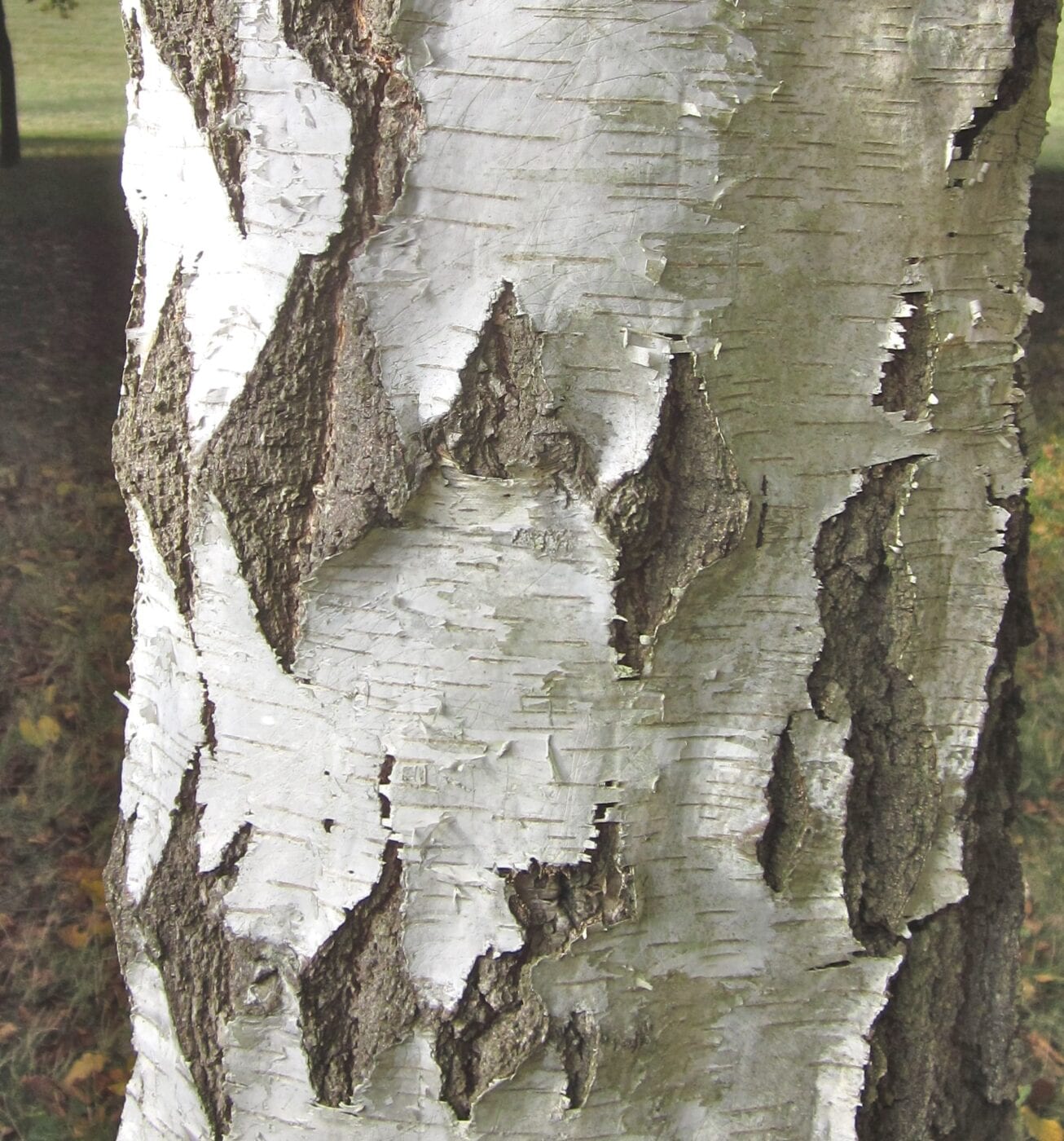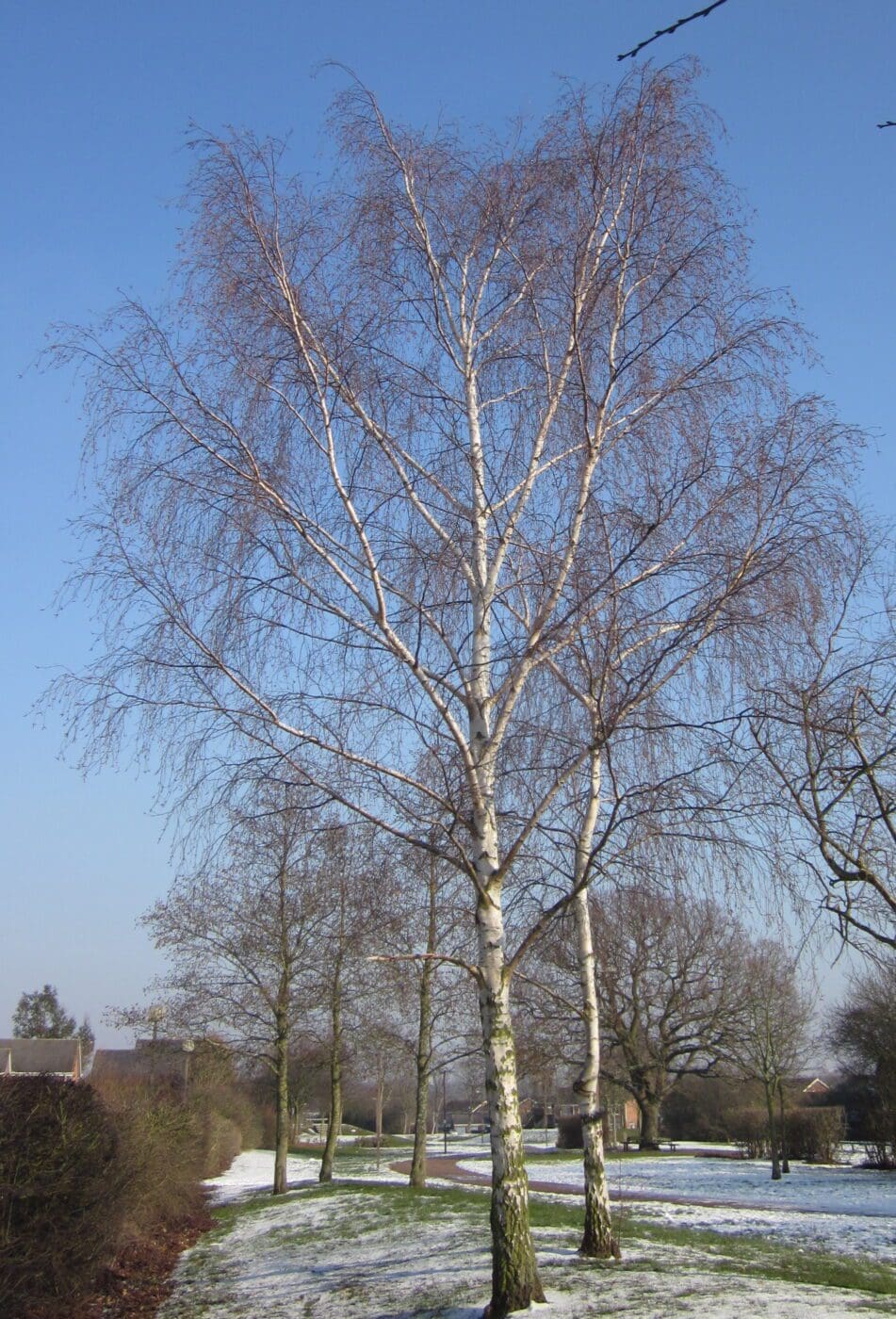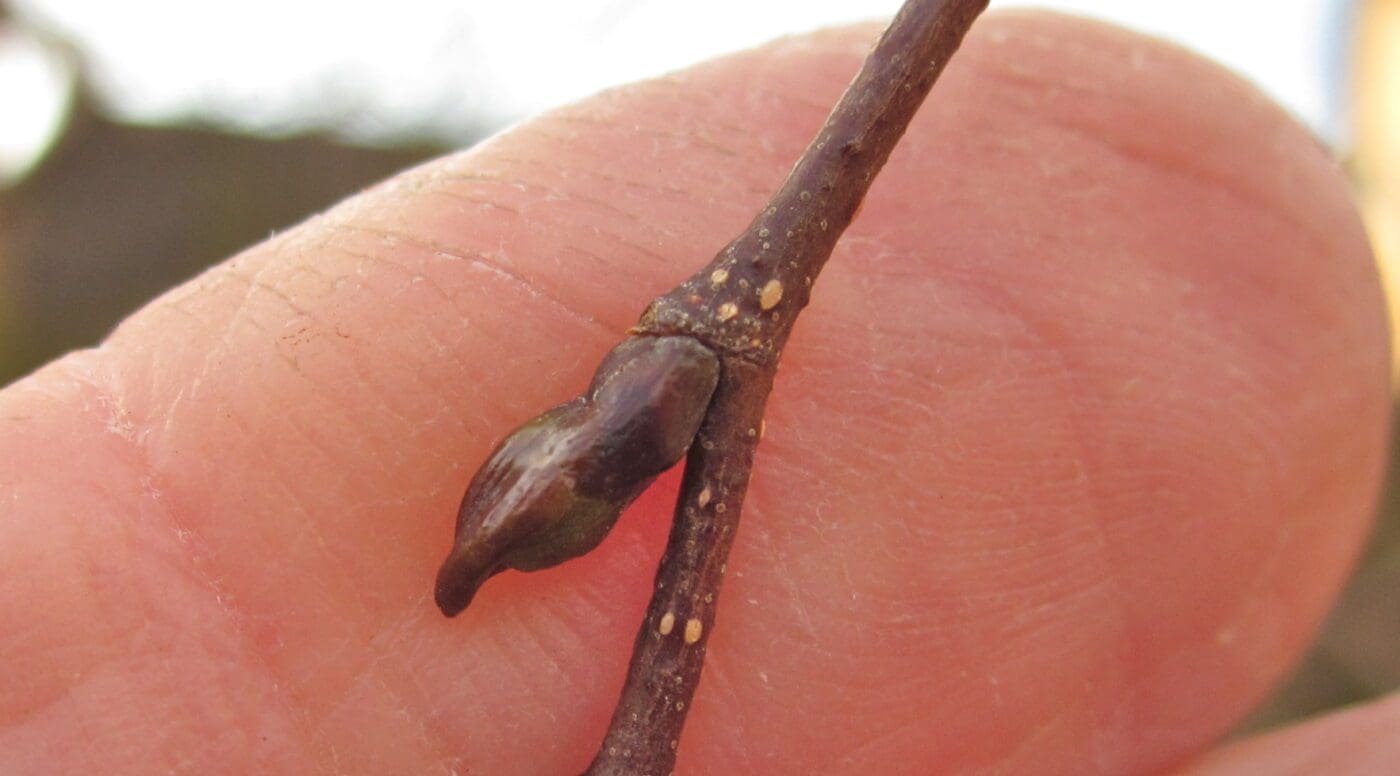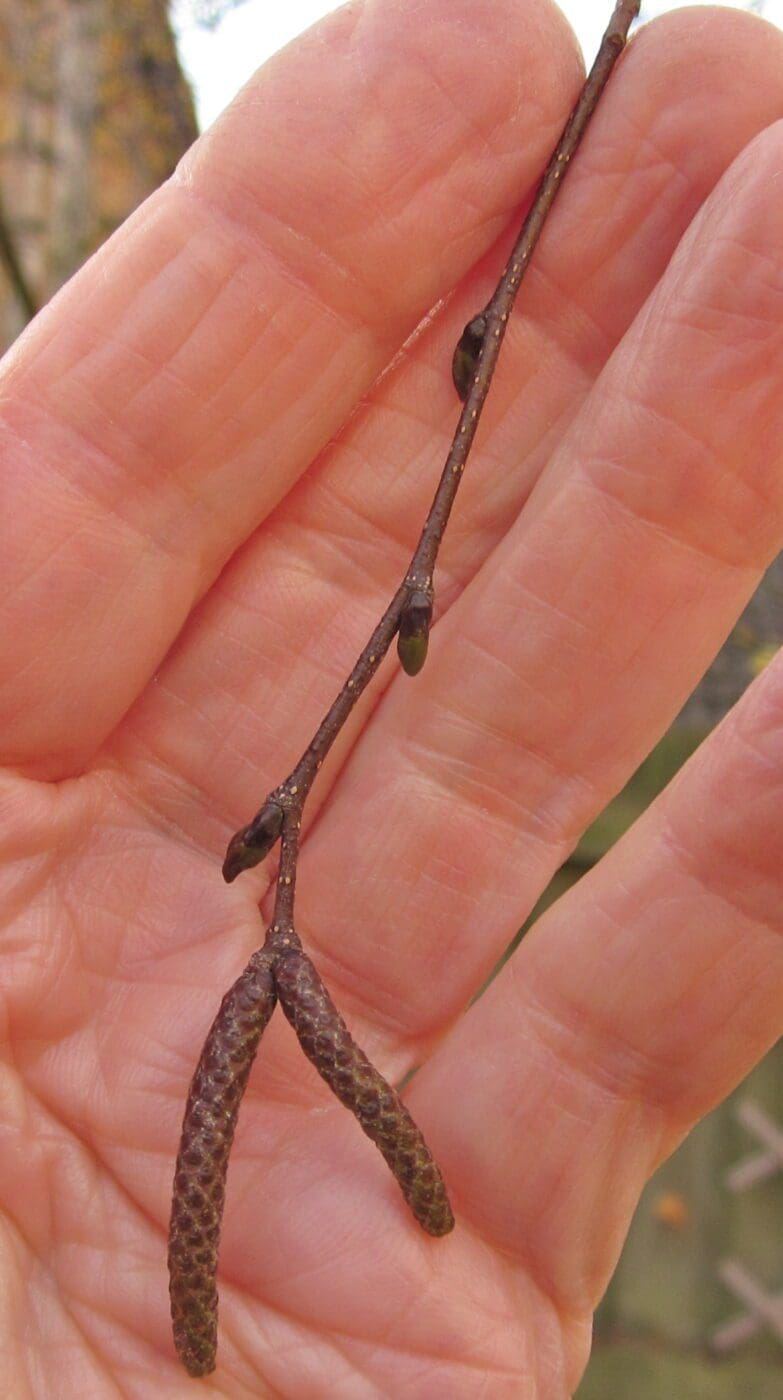Silver Birch tree identification
The Silver Birch Betula pendula is widespread in Britain, occurring naturally on heathland and moorland. It has been planted extensively in urban areas as an ornamental tree. Its weeping branches and silver bark make it very attractive. It can be confused with the Downy Birch which grows in wetter, non-chalky areas. There are a number of cultivars : ‘Fastigiata’ is an upright, columnar Birch. ‘Purpurea’ is a purple-leaved Birch. ‘Tristis’ is a weeping Birch. ‘Youngii’ is another, small weeping Birch and ‘Dalecarlica’ Swedish Birch has deeply cut leaves.
Silver Birch tree identification – Silver bark with black diamonds, triangular toothed leaves, male and female catkins. The black arrows and diamonds of the bark distinguish this birch from many others varieties of ornamental birch that are planted in urban areas. Click HERE to learn more about the bark of some rare or ornamental birches. Click on any photo to enlarge it.
Birches and Alders are closely related and share many features. Both have flowers in the form of catkins (with no petals) and both bear male and female flowers on the same tree (monoecious). Male birch catkins hang down in April and May and release pollen onto the wind. The female flowers are small and upright in spring but once fertilised become green hanging catkins in July and August and turn brown and shed seeds in autumn and winter.
The leaf has teeth (shown by the arrows) that stick out and bend down towards the leaf tip. In between these teeth are smaller teeth. This arrangement of teeth is different from the Downy Birch which has more regular teeth.
Female catkins with male catkins in April, just before the leaves. The female catkins are small and pale green.
Female catkin and seeds. This catkin has been broken up to show the seeds. Photo taken in late July but the seeds will not be shed until autumn.

